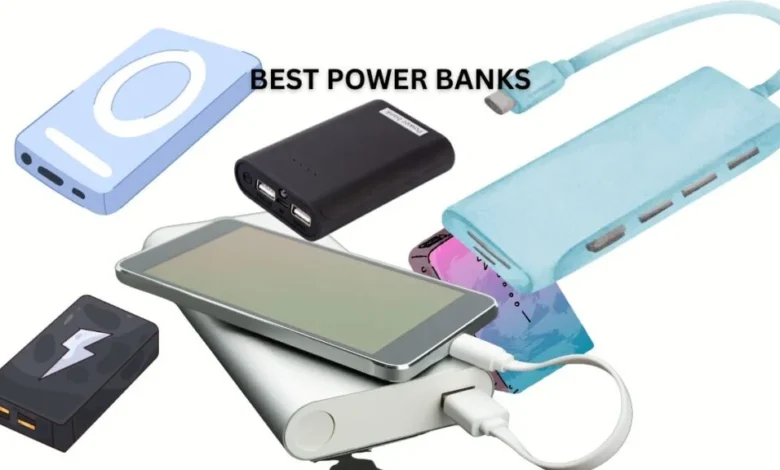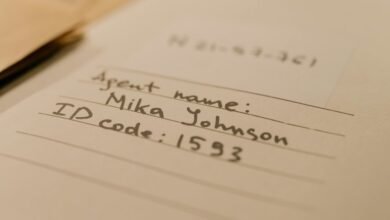Top Power Banks in Kenya for Long-Lasting Battery Life on the Go

Well, your phone just died. Again.
And you are in the middle of paying for your boda ride through M-Pesa.
Or you’re about to close that big deal. Or your Uber driver is calling and you can’t pick up.
Dead battery in Kenya isn’t just annoying. It can cost you money. It can cost you opportunities. It can mess up your entire day.
That’s why power banks aren’t optional anymore. They’re survival gear.
Keep Everything Charged
Before we talk about the best power banks, let me tell you something. A power bank alone won’t solve all your charging problems. You need a complete charging setup.
That’s where smart power charging solutions come in.
Think about it.
You’ve got your phone, your laptop, maybe a tablet, earbuds. All these devices need power. Different charging speeds. Different ports. Different cables.
Smart charging solutions from Minify Solutions give you everything in one place – from compact chargers for daily use to high-capacity power banks for long trips.
No more juggling five different chargers. No more guessing which cable goes where.
Just plug in and go.
Because here’s the truth. The best power bank in the world is useless if you don’t have the right setup to charge it.
Or if your laptop dies while your power bank is fully charged. You need the whole ecosystem. Not just one piece.
Now let’s talk about power banks that actually work in Kenya.
Why Power Banks Matter in Kenya (And Why Most People Buy the Wrong One)
Power cuts in Kenya aren’t a “what if” — they’re a “when.” Your phone is your lifeline. For M-Pesa transactions. For Uber rides. For closing business deals. For staying connected to family.
But here’s what most people do wrong. They walk into a shop. See a cheap 50,000mAh power bank for KSh 1,000. Think they’re getting a deal. Then wonder why their “50,000mAh” bank barely charges their phone once.
Physics doesn’t work that way. A genuine 50,000mAh power bank costs significantly more. Those cheap ones lie about capacity. They use low-quality batteries. They can even damage your phone.
What Makes a Power Bank Actually Good (Not Just Good-Looking)
Stop looking at the price tag first. Stop looking at how shiny it is. Here’s what actually matters:
a). Real Capacity (mAh)
Higher mAh means more charges – a 10,000mAh bank can charge your phone 2-3 times. But remember this.
The actual capacity of a power bank is about 2/3 of the indicated capacity due to energy loss and voltage conversion. So that 10,000mAh bank? It’s really delivering about 6,660mAh to your phone. Not a scam. Just physics.
b). Fast Charging Support
Look for fast-charging support like Quick Charge (QC) or Power Delivery (PD).
Because sitting around for three hours while your phone charges is a waste of time you don’t have. Fast charging can take your phone from dead to 50% in 30 minutes. That’s the difference between making your meeting and missing it.
c). Multiple Ports
You’re not just charging your phone. You’ve got earbuds. Maybe a smartwatch. Maybe you’re sharing with a friend. Multiple USB ports let you charge more devices at once. Simple math. More ports = more devices = more value.
d). Durability and Build Quality
A power bank that breaks after two months is expensive. Even if it cost KSh 1,000. Because now you’re buying another one. Quality brands use better battery cells. They have proper circuit protection. They last 2-3 years instead of 6 months.
The Top Power Banks in Kenya That Actually Deliver
Let me break down the options that work. Real devices. Real performance. Real value.
Anker PowerCore 20100
Anker’s PowerCore 20100 has 20,100mAh capacity – enough to charge your phone 4-6 times. This is the Toyota of power banks. Not the flashiest. But you can count on it.
It’s got PowerIQ technology. That means it figures out what device you plugged in. Then delivers the optimal charging speed. No guessing. No slow charging because you used the wrong port.
What you get:
- 20,100mAh actual capacity
- Dual USB ports for charging two devices
- Fast charging with PowerIQ technology
- Compact design considering the capacity
- 18-month warranty
Price range: KSh 5,000-6,000 Best for: Anyone who needs reliability over everything else
Xiaomi Mi Power Bank 3
The Mi Power Bank 3 has 20,000mAh capacity with USB-C and fast charging support at 18W. Xiaomi understands what people actually need. Not what looks cool in ads.
This bank has USB-C. That means newer phones charge faster. It also means you can use one cable for your phone and the power bank itself. Less cables to carry. Less stuff to forget.
What you get:
- 20,000mAh capacity
- 18W fast charging
- Dual USB ports
- USB-C input and output
- Affordable for what you get
Price range: KSh 3,500-4,500 Best for: People with newer phones who value speed
Romoss Sense 8+
Romoss Sense 8+ has 30,000mAh capacity with multiple ports and LED display for battery status. This is not for casual users. This is for people who mean business.
30,000mAh means you can charge multiple devices multiple times. Your phone. Your tablet. Your friend’s phone. All at the same time.
The LED display tells you exactly how much power is left. No guessing if you have enough juice for one more charge.
What you get:
- Massive 30,000mAh capacity
- Multiple ports (USB-A, USB-C, Micro USB)
- LED display for battery status
- Can charge laptops and tablets
- Built like a tank
Price range: KSh 4,500-5,500 Best for: Heavy users, families, long trips, people who charge multiple devices
Samsung Power Bank 10000mAh
Samsung’s 10,000mAh power bank with 15W fast charging is compact enough to slip into your pocket. Sometimes you don’t need massive capacity. Sometimes you just need something that fits in your pocket.
This is that something. Small enough to forget it’s there. Powerful enough to save your day when your battery dies.
What you get:
- 10,000mAh capacity
- 15W fast charging
- Dual-port charging
- Pocket-friendly size
- Samsung quality and warranty
Price range: KSh 4,000-9,500 Best for: Daily commuters, minimalists, people who hate carrying heavy bags
Oraimo Power Banks – The Kenya Favorite
Oraimo is affordable, stylish, and offers high-capacity options up to 27,000mAh with built-in cables in some models. Oraimo understands Kenya. They know people want value. They know people lose cables.
That’s why many Oraimo models come with built-in cables. Lightning for iPhones. USB-C for newer Androids. Micro-USB for older devices. All built right into the power bank.
What you get:
- Multiple capacity options (10,000mAh to 27,000mAh)
- Built-in cables (on select models)
- Fast charging support
- LED indicators
- Very affordable
Price range: KSh 2,500-7,000 Best for: Budget buyers, people who always lose cables, multi-device users
How to Choose the Right Power Bank Capacity for Your Life
Stop buying based on what your friend has. Buy based on what you actually do.
For Daily Commutes (10,000-20,000mAh)
If you’re commuting daily, get 10,000-20,000mAh capacity. One full charge for your phone. Maybe two if you’re lucky. Small enough to carry every day. Light enough to not notice.
For Long Trips (20,000-30,000mAh)
For long trips, go for 30,000mAh capacity. Road trip to Mombasa? Weekend camping at Lake Naivasha? You need capacity. Multiple devices. Multiple days. No outlets.
For Work (20,000mAh+)
Working remotely? Freelancing from cafes? You need to charge your laptop, phone, and maybe earbuds. For laptops and tablets, choose a power bank with at least 20,000mAh capacity since tablet batteries average 8,000mAh. Don’t cheap out here. Your income depends on staying powered up.
The Math They Don’t Tell You About Power Bank Capacity
Here’s the truth about mAh numbers. A 10,000mAh power bank has an actual 6,660mAh capacity, which allows you to charge most new smartphones about 1.5 times.
Why the difference? Energy is lost during voltage conversion. Heat generation during charging. Efficiency of the charging circuit.
So when you see “50,000mAh for KSh 1,000” , understand that’s impossible. The batteries alone cost more than that. It’s either fake capacity. Or low-quality cells that die fast. Or both.
Fast Charging Explained (Without the Tech Talk)
Your phone supports fast charging. So should your power bank.
- Power Delivery (PD) – All iPhones from the iPhone 8 support Power Delivery which charges your smartphone back up to 55-60% within half an hour. That’s PD. If you have an iPhone, look for PD support. Not negotiable.
- Quick Charge (QC) – New Android smartphones support Power Delivery and Quick Charge which ensures your battery is back up to 50% in half an hour. Most Android phones use this. Samsung, Xiaomi, OnePlus. Same deal as PD. Fast charging when you need it.
Without these technologies? You’re waiting 2-3 hours for a full charge. With them? 30 minutes gets you through the rest of your day.
Safety First: How to Not Burn Your House Down
Power banks use lithium-ion batteries. Same as phones. Same as laptops. And yes, they can be dangerous if misused.
- Never Overcharge – Ensure your power bank has overcharge protection to prevent thermal runaway, which can lead to fires or explosions. Modern power banks stop charging automatically. But don’t test this by leaving it plugged in for days. Charge it. Unplug it. Simple.
- Avoid Extreme Temperatures – Don’t charge a power bank overnight as this can increase the risk of overcharging. Heat kills batteries. Cold kills batteries. Don’t leave your power bank in a hot car. Don’t leave it in direct sunlight. Don’t charge it under your pillow.
- Watch for Warning Signs – Swelling? Stop using it immediately. Overheating? Unplug it now. Weird smell? Get rid of it. A swollen power bank is a serious hazard and should be disposed of properly at an authorized battery recycling center.
- Buy Quality Brands – Always choose certified power banks (UL, CE, FCC) to guarantee they meet safety standards and include necessary protective features. Fake power banks skip safety features. They use cheap batteries. They’re dangerous. Not worth the risk.
Where to Buy Genuine Power Banks in Kenya (And Avoid Fakes)
Stick to trusted retailers like Minify Solution which offers wide range, reliable products, and fast delivery. Jumia Kenya has tons of options but read reviews first. Phone Place Kenya has physical stores so you can see before buying.
Don’t buy from random Instagram sellers. Don’t buy from street vendors. Don’t buy suspiciously cheap power banks. If it seems too good to be true, it is.
How to Make Your Power Bank Last Longer
You paid good money for this. Make it last.
- Charge it fully before first use – This calibrates the battery. Sets proper charging patterns. Extends lifespan.
- Use quality cables – Use quality cables to avoid slow charging. Cheap cables waste power. They charge slower. They can damage ports.
- Store it properly – Store it in a cool, dry place as heat kills batteries. Not in your hot car. Not in direct sunlight. Room temperature is perfect.
- Don’t let it fully die regularly – Don’t let it drop to 0% often as it shortens lifespan. Lithium-ion batteries hate being fully discharged. Keep it above 20% when possible.
- Clean the ports – Clean the ports to avoid connection issues. Dust builds up. Lint gets stuck. This causes slow charging or no charging. Quick wipe with a dry cloth every month.
Common Mistakes People Make (And How to Avoid Them)
Mistake 1: Buying Based on Price Alone
That KSh 1,000 “30,000mAh” power bank? It’s probably 5,000mAh. Or it’ll die in three months. Or both. Spend KSh 3,000-5,000 for something real.
Mistake 2: Ignoring Charging Speed
Some power banks don’t work well with iPhones – check compatibility before buying. A power bank that takes 12 hours to recharge is useless. Look at input charging speed. Not just output.
Mistake 3: Buying Too Small
Buying a 5,000mAh power bank to save money is stupid. You’ll barely get one phone charge. Then you’re buying another power bank. Start with at least 10,000mAh.
Mistake 4: Not Checking Compatibility
Your phone uses USB-C. Your power bank only has USB-A. Now you need adapters. Match your ports to your devices.
The Future of Power Banks in Kenya
Solar charging is coming. Perfect for Kenya’s sunshine. Charge your power bank from the sun while you’re at a barbecue. Or camping. Or during a power cut.
Faster charging too. 120W charging exists now. Your phone could charge in 10 minutes. That’s the future.
Smarter features. Power banks that tell you exactly what’s connected. How long until full charge. Health of the battery. All through an app.
FAQs: Your Power Bank Questions Answered
Can I take my power bank on a plane? Yes, but only in carry-on luggage. Under 20,000mAh is usually fine but check with your airline first.
How long do power banks last? Good quality ones last 2-3 years while cheap ones might die in 6 months. You get what you pay for.
Can cheap power banks damage my phone? Quality ones have protection circuits but cheap knockoffs can fry your phone. Don’t risk a KSh 500 power bank with your KSh 50,000 phone.
Why does capacity decrease over time? Lithium batteries degrade with each charge cycle – expect 300-500 cycles before noticeable degradation. Normal physics. Can’t be avoided. Just slowed down with proper care.
Your Next Move
Stop settling for dead batteries. Stop missing opportunities because your phone died. Stop buying cheap power banks that don’t work.
Get a real power bank. From a real brand. That actually charges your devices.
And remember. A power bank is just one piece of the puzzle. You need the full charging setup. The right cables. The right adapters. The right wall chargers.
That’s where complete smart power charging solutions make sense. Everything you need. All tested to work together. No guessing. No compatibility issues. Just power when you need it.
Because in Kenya, staying powered up isn’t about convenience. It’s about survival. It’s about closing deals. It’s about getting home safely. It’s about running your business.
Don’t let a dead battery stop you. Get powered up. Stay powered up. Win.




